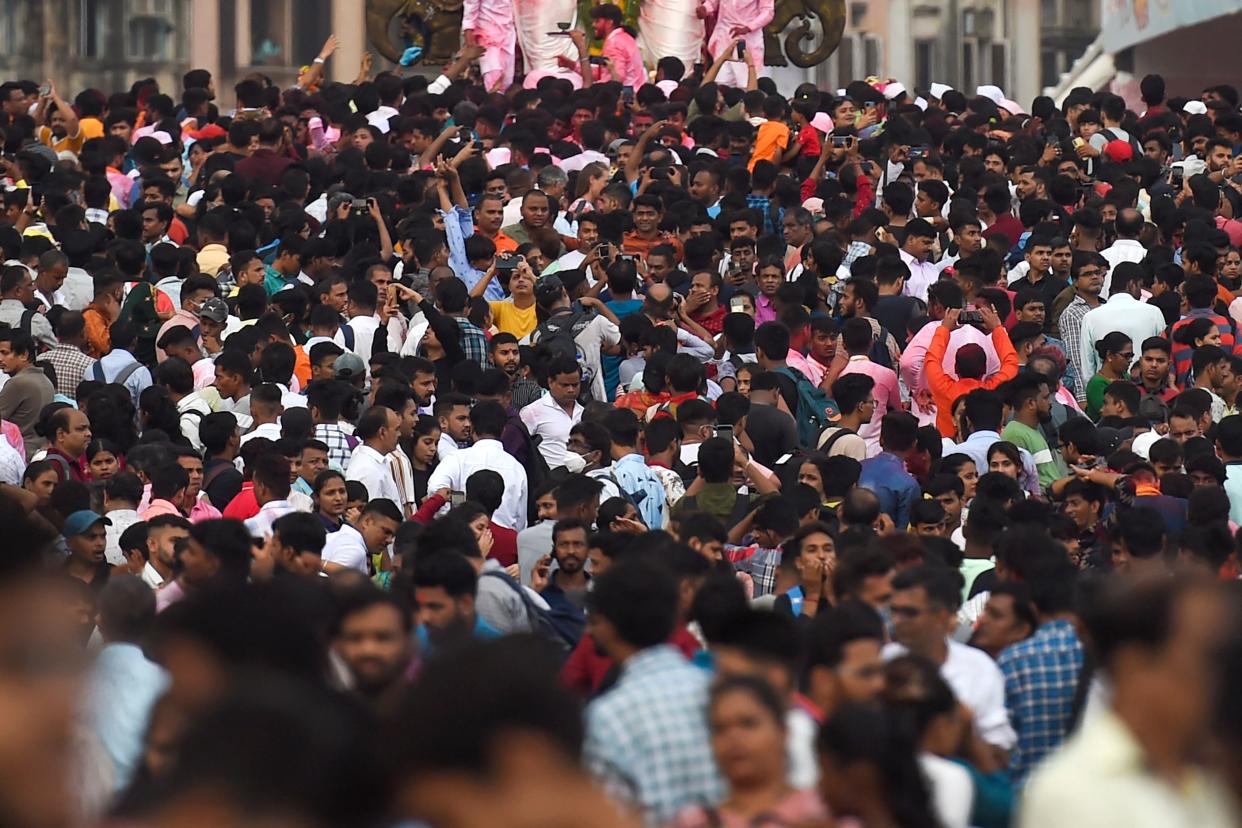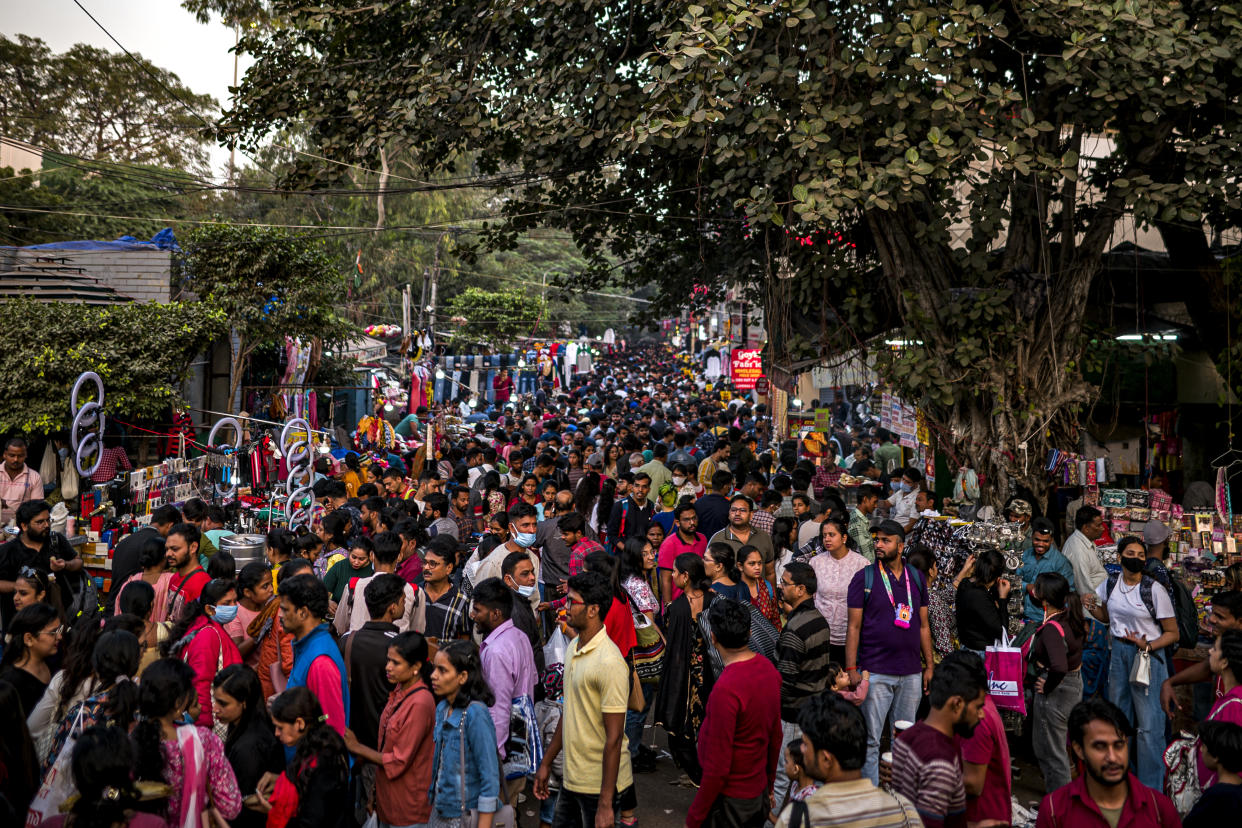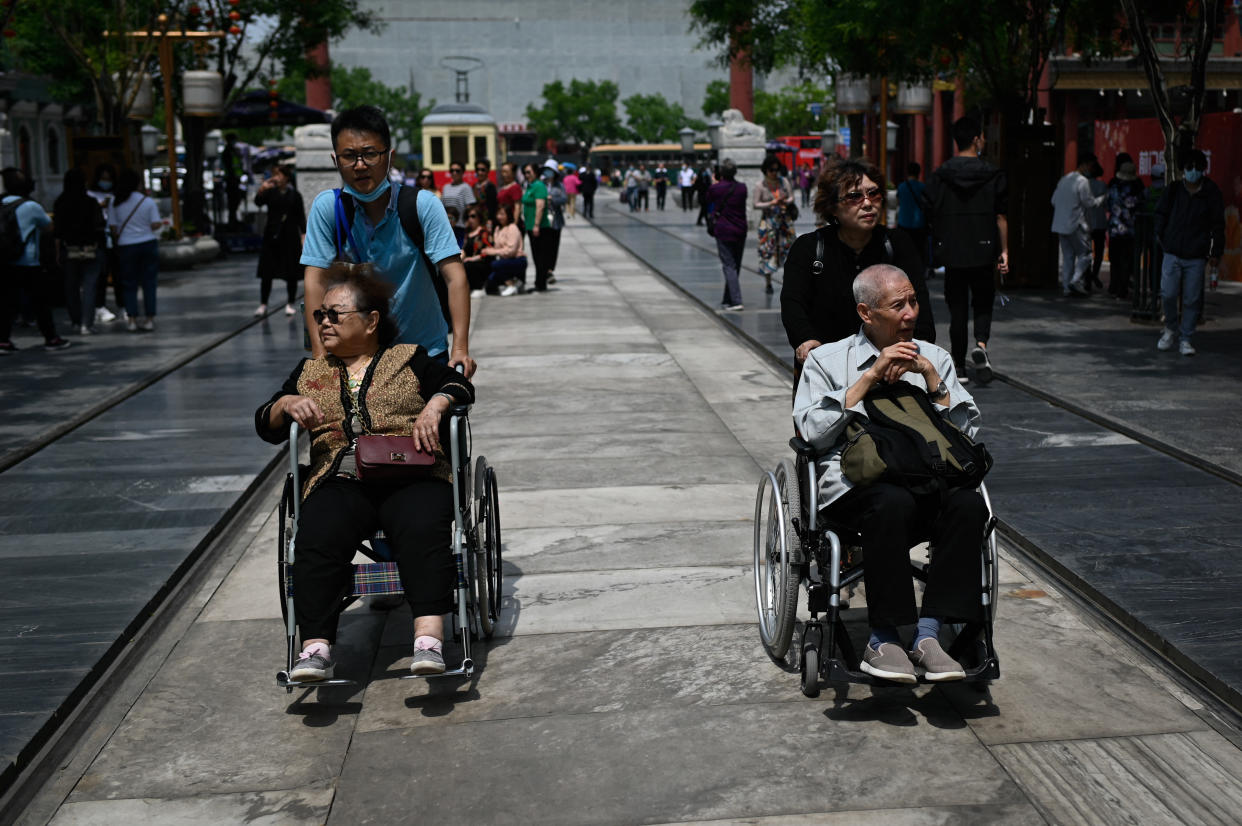India is about to pass China as the world's most populous country

India is expected to surpass China and become the world’s most populous nation within the next three months, according to a recent report by the United Nations’ population division, marking a seismic shift on the global stage in a trend with significant social and economic impact for both countries.
“Most people think India's economy is still a fraction of what it could be in the future, which means there's so much promise,” Dr. Audrey Truschke, an associate professor of South Asian History at Rutgers University, told Yahoo News, adding that much of the potential is due in large part to India being “such a young country.”
Of the rapidly growing 1.41 billion people in India, about 1 in 4 are under the age of 15 and nearly half are under 25. By comparison, China’s population is about 1.45 billion, but those under 25 make up only a quarter of the population.
“The Indian subcontinent has always supported a robust human population,” Truschke said. “India has also long been compared to China, and they have for a long time traded with one another. So as much changes over the course of human history, that's something that recurs — both the dense population of the subcontinent, as well as the comparison with China.”

Since 1950, India and China have accounted for an estimated 35% of the world’s population growth, with China emerging as a global industrial power. Combined, the two population epicenters are a significant slice of the world’s roughly 8 billion people.
But China’s one-child policy, which was introduced in 1980, drastically reduced its birth rate — and redirected its economic prospects. In recent years, women have been allowed to have up to three children, but the average birth rate still sits at 1.2. China's population is set to peak in the coming years and projected to decline. This means that the older, nonworking population will have to rely on individual single children, many of whom will probably face economic difficulties caring for two parents and four grandparents. As a result, many elderly Chinese will be left to rely on a public pension system that is reportedly set to run out of money by 2035, despite recent efforts by the government to boost revenue.
“Without a quality pension support system, young people would be reluctant to get married and have children, [and] middle-aged people are double-burdened to care for the young and the elderly,” Zhang Jingwei, a researcher at Chongyang Institute for Financial Studies at Renmin University, told the South China Morning Post. “Only when the elderly can enjoy the fruits of the reforms and are guaranteed institutionally happy twilight years, anxiety at different age groups can be solved and all of society’s energy can be released.”

Population growth in China is flatlining, and its supply of cheap labor may follow suit. Despite stubborn unemployment in pockets of the country, the shortage of skilled manual labor is becoming more evident.
India and its growing population of more than a billion people could pick up some of the slack, but its growth rate is also declining, and its industrial infrastructure is not as robust as China’s. And much of India’s population growth is centered in its poorer regions, especially in the north.
By 2050, data shows that India is expected to provide more than a sixth of the world’s population of working age (15 to 64 years old).
_____
Cover thumbnail photo: Punit Paranjpe/AFP via Getty Images
